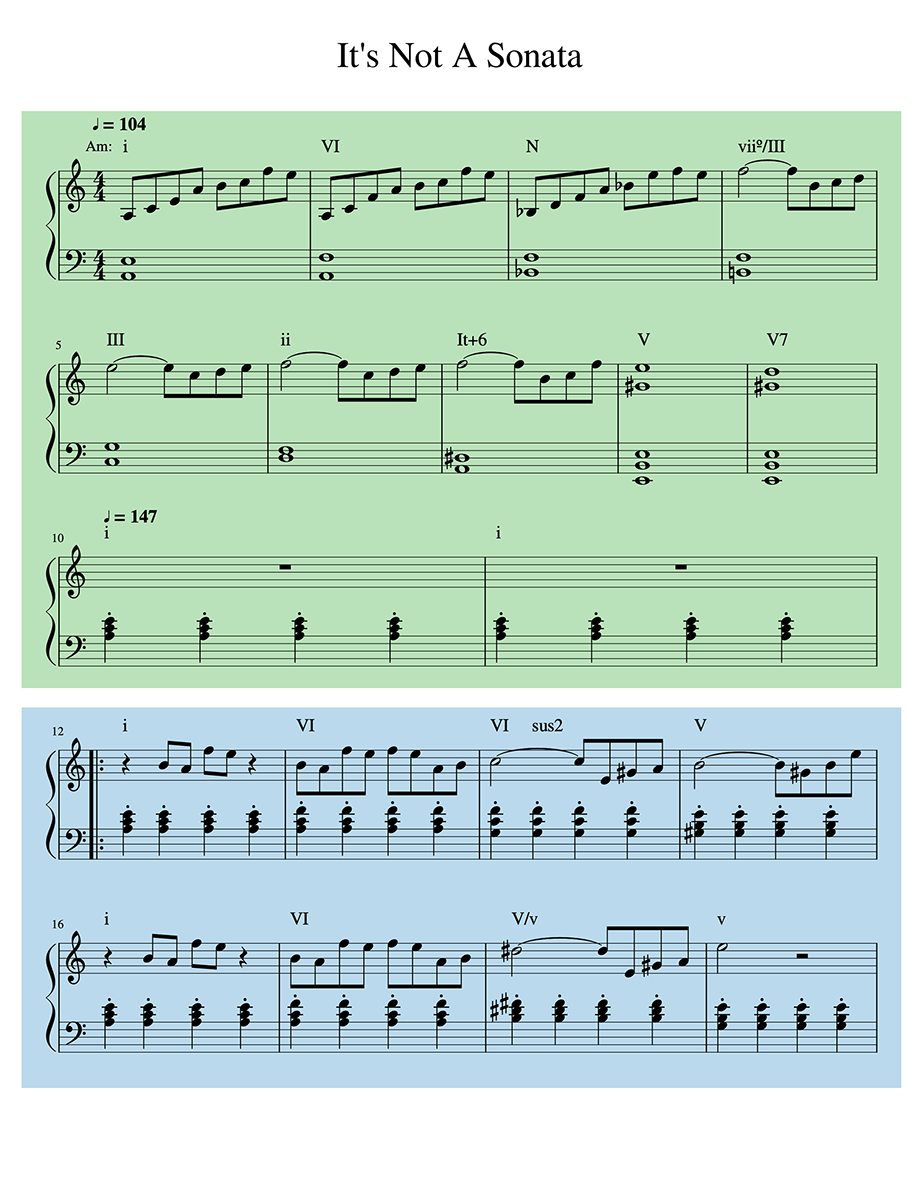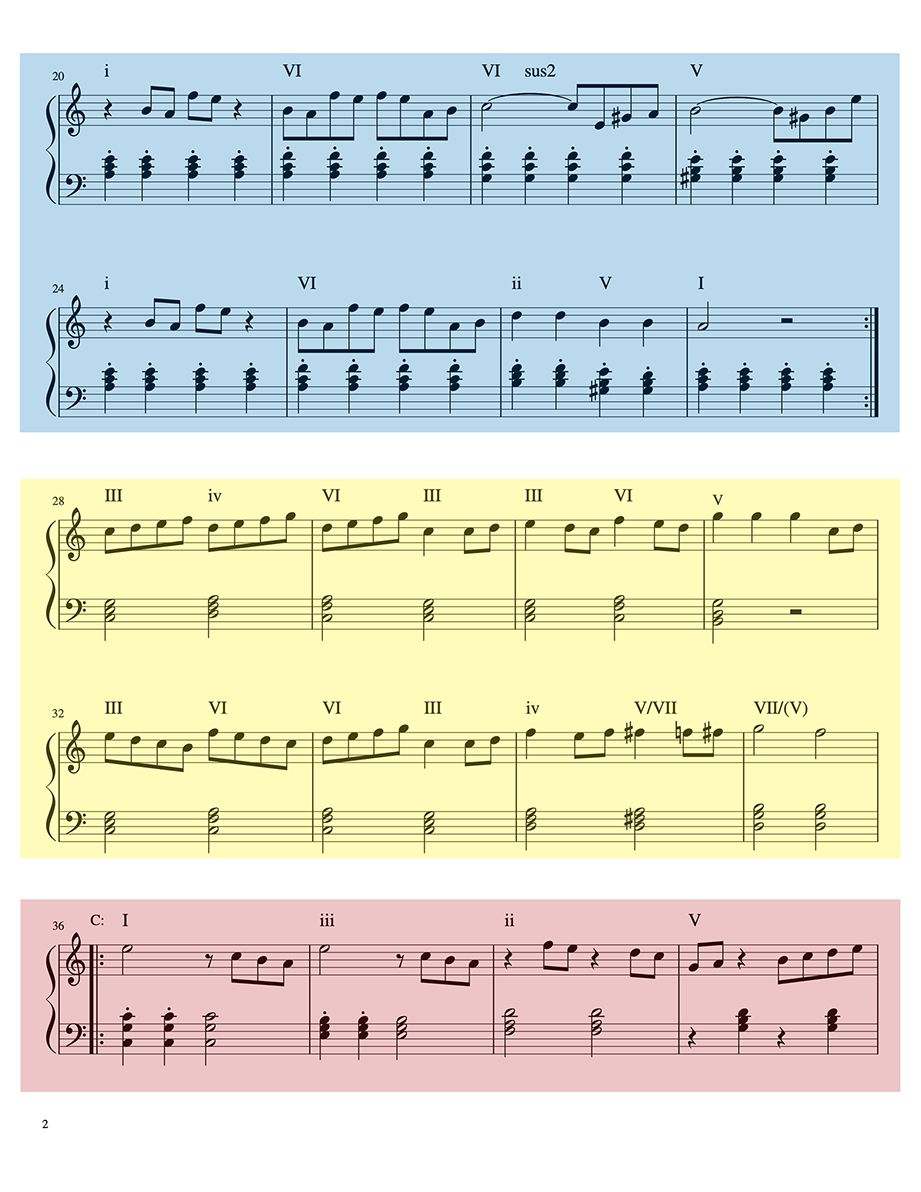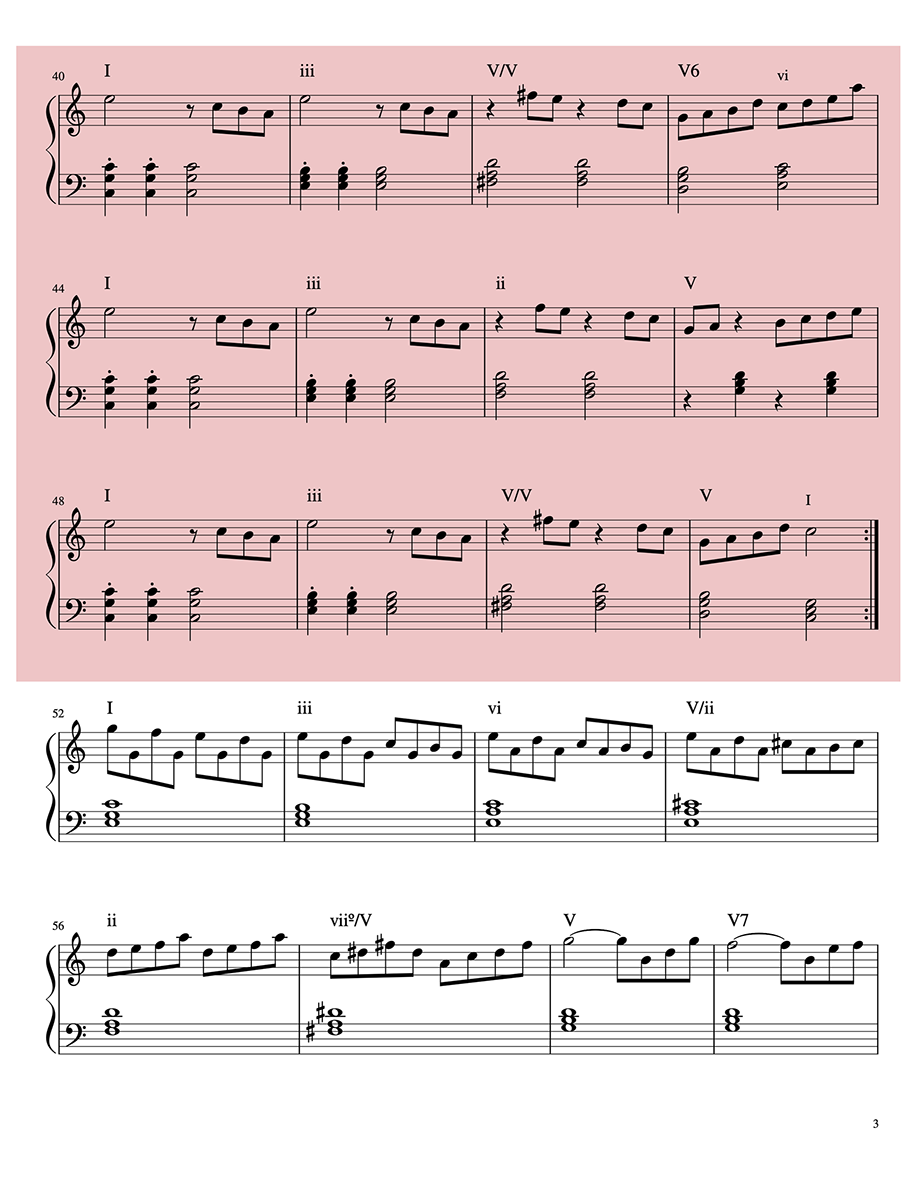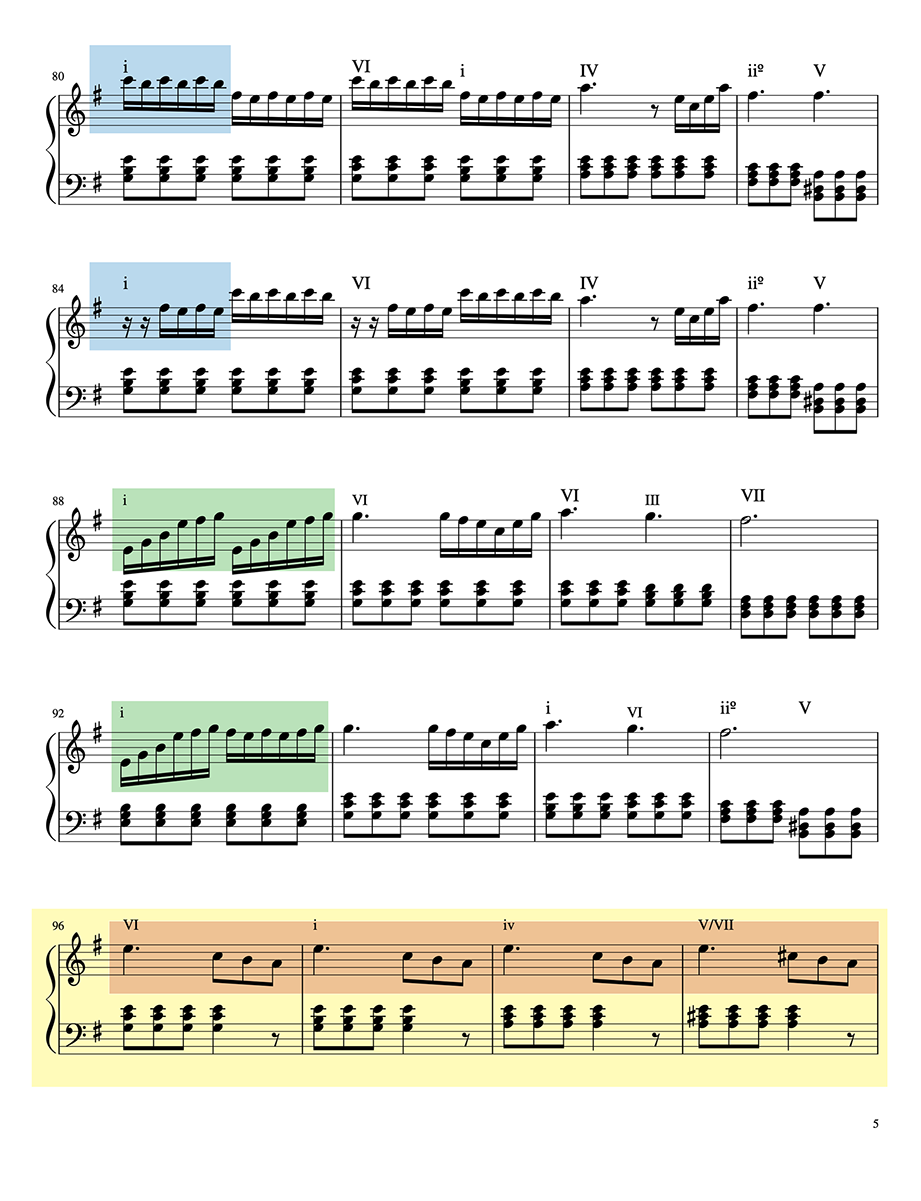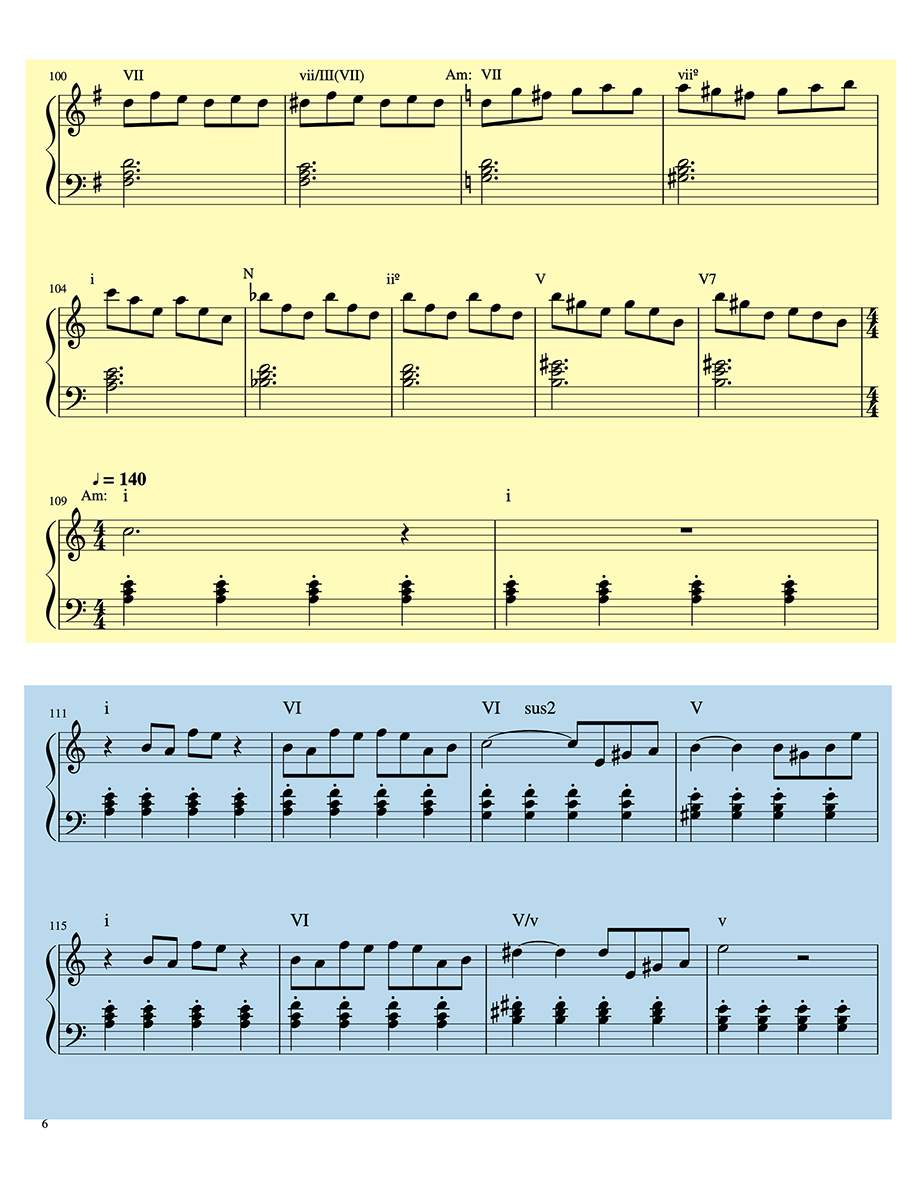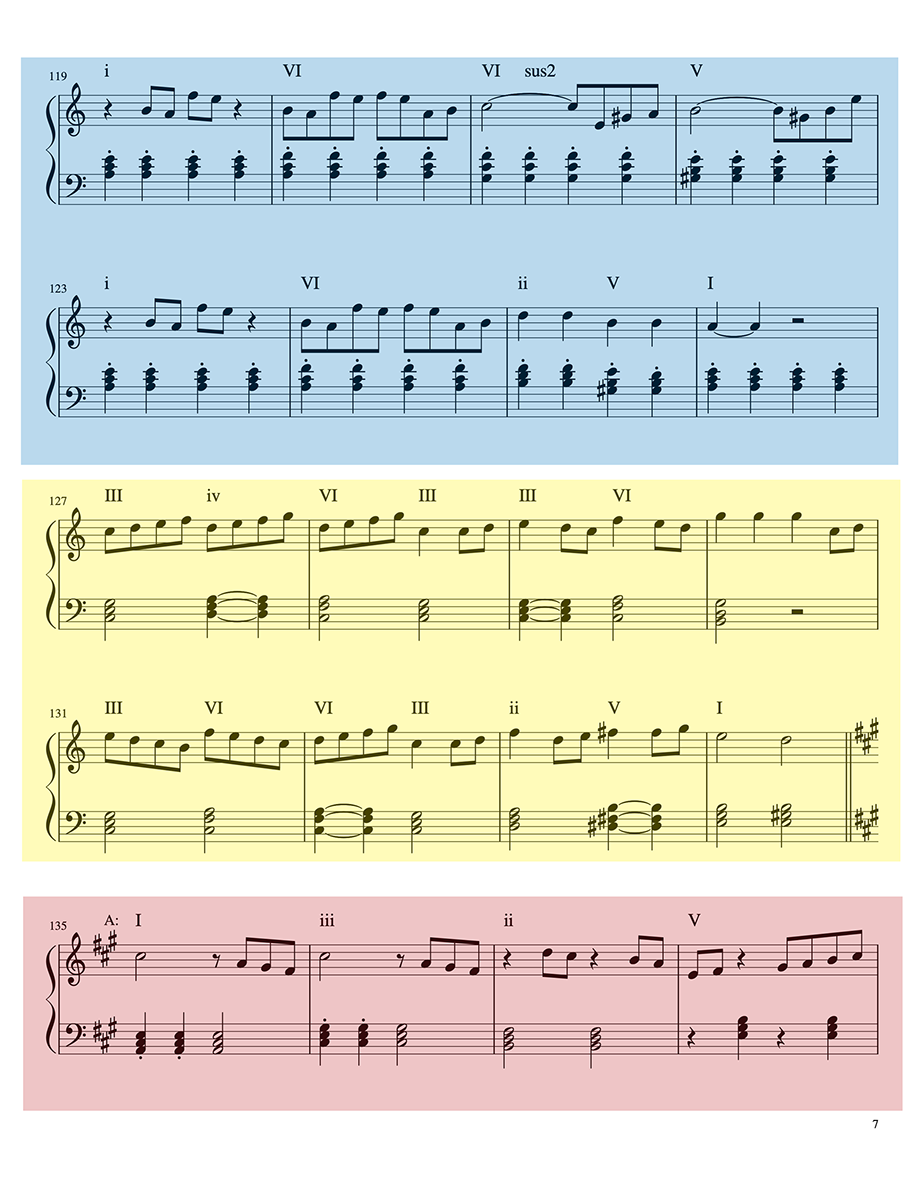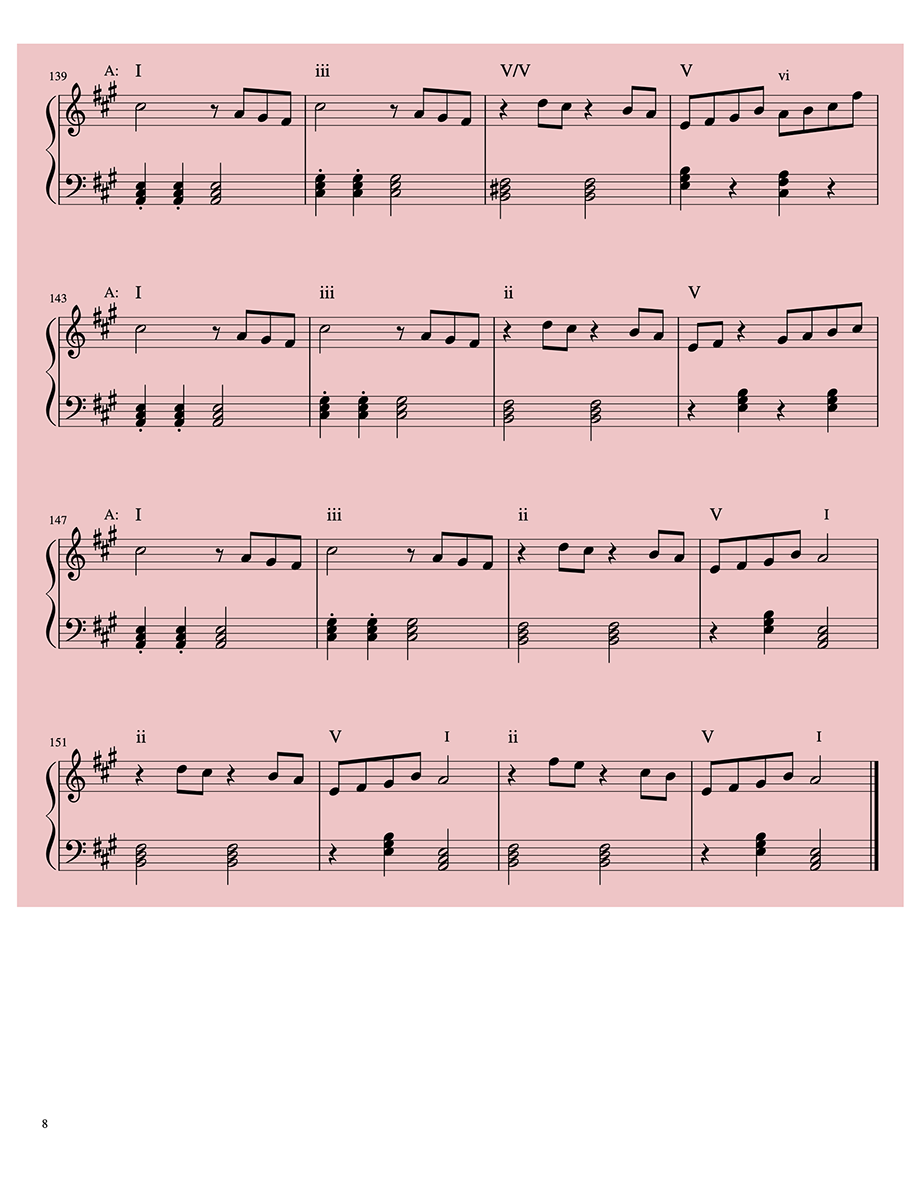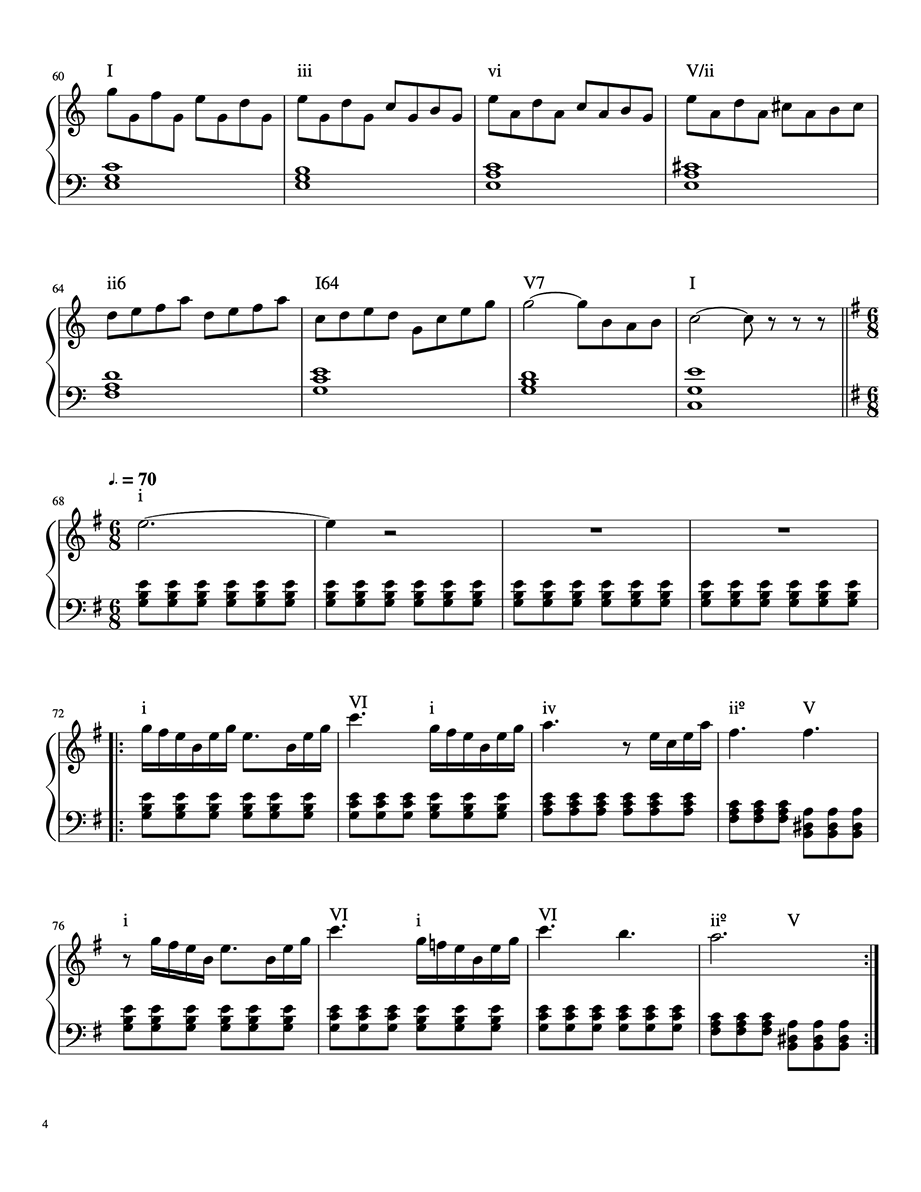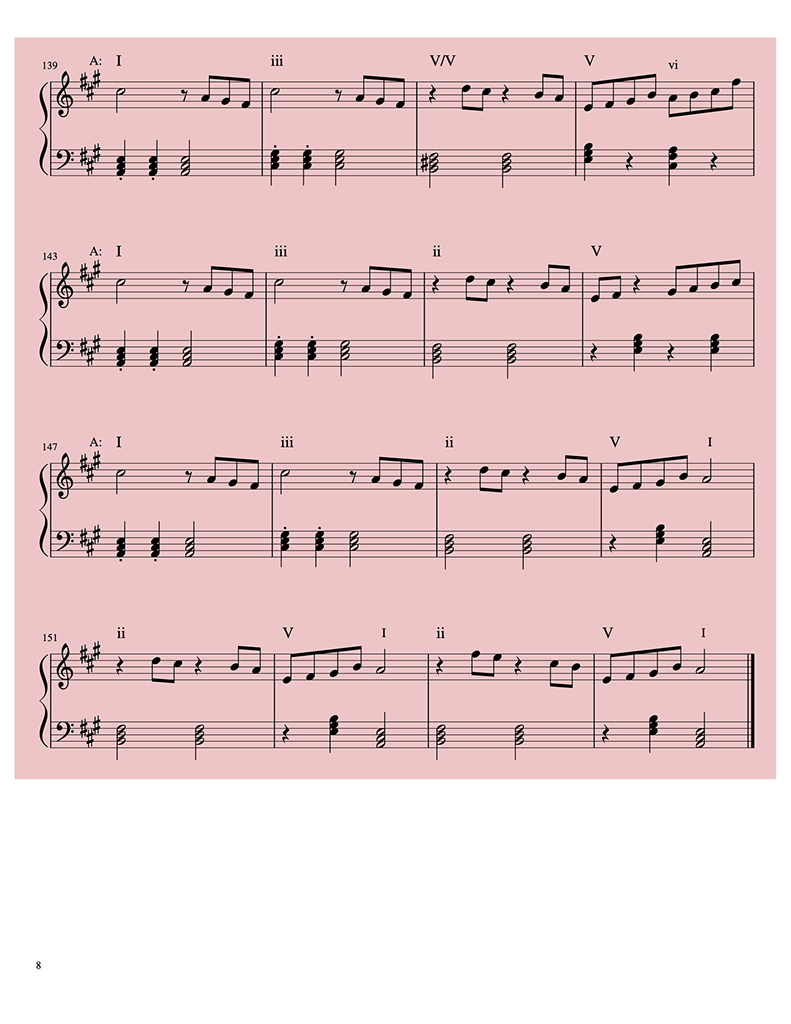
HOSTS- Jeremy Burns, Matthew Scott Phillips
TYPE- Theory
DURATION- 111:53
BUMPER MUSIC- "It's Not A Sonata" (Area 47 Music)
ANNOUNCER- Mike Cunliffe
We've familiarized ourselves with the building blocks of a form, such as motives, phrases and periods. We have delved into small forms, such as binary and ternary. Now it's time to think a little bigger. It's time to talk about the sonata form and it's basic elements: the exposition, the development and the racapitulation.
MOTIVE- The smallest possible musical idea. A recurring combination of notes and rhythms that are recognizable, in some shape or form, throughout the piece. Motives can be grouped together as sub phrases, which can grouped together as PHRASES.
PHRASE- The smallest possible musical statement that stands on it's own as a complete thought. These can vary in length and typically end in a state of either full or partial repose. This state of repose is also known as a CADENCE. PHRASES are often grouped together to form PERIODS.
PERIOD- When two PHRASES are played back to back and the 2nd of the two has a stronger CADENCE than the prior. This has a question/answer feel to it also known as the ANTECEDENT/CONSEQUENT.
CADENCE- The harmonic goal, or resting point, of a chord progression or musical passage.
AUTHENTIC CADENCE- Considered the strongest of all cadences, this is typically a DOMINANT (V) chord resolving to the TONIC (I) chord.
HALF CADENCE- Considered the weakest, this cadence often leaves one desiring a greater resolution and a "cliff hanging" effect of suspense. The HALF CADENCE typically resolves to a DOMINANT (V) chord.
DECEPTIVE CADENCE- This usually occurs when a chord progression ends on a VI chord (or any chord that includes scale degree 1) when you would expect to hear the TONIC (I) chord.
THE PREVIOUS TERMS WERE DISCUSSED, IN DETAIL, IN
EPISODE 20-FORM AND ANALYSIS PT.1
BINARY- This form consists of two sections, an A and a B section. The sections may be OPEN or CLOSED.
TERNARY- This form consists of 3 sections, often an A and a B section, with a return of the A acting as the 3rd section. Also, there may be a C section. The sections may be OPEN or CLOSED.
CLOSED- A closed section will end with a complete harmonic resolution, such as an AUTHENTIC CADENCE.
OPEN- An opened section will end with an incomplete harmony, such as a HALF CADENCE, that will want to move into the next section.
THE PREVIOUS TERMS WERE DISCUSSED, IN DETAIL, IN
EPISODE 53-FORM AND ANALYSIS PT.2
SONATA- Not to be confused with the sonata genre, this arrangement of musical ideas was popular in the Classical period. It involves the exposition (introducing the primary and secondary themes), the development (where these themes are played with and varied) and the recapitulation (where we return to the original material).
EXPOSITION- The first part of a sonata form, this introduces the PRIMARY and SECONDARY THEMES with a connecting TRANSITION between them.
TRANSITION- This short passage of music will allow for a MODULATION to a new key.
DEVELOPMENT- This begins the second part of the sonata form. During this section, a new key is introduced and the main themes are varied and played with. A new theme will sometimes also be introduced.
RETRANSITION- At the end of the DEVELOPMENT, this will be the transition back to the home key.
RECAPITULATION- Now that we have returned to the home key, we will repeat the EXPOSITION. The PRIMARY THEME will be just as it was in the EXPOSITION. However, the SECONDARY THEME will be in the original key or the PARALLEL major or minor of said key. The main thing is that we hold the TONIC of the original key. This will also require a different TRANSITION between the two themes.
-The SONATA form has 3 main sections, divided into two parts (such as a binary form). The first part consists of the EXPOSITION. The second part consists of the DEVELOPMENT and then the RECAPITULATION.
THE EXPOSITION
The EXPOSITION consists of:
1-The PRIMARY THEME (P1) holds the main theme and key of the piece. Often it will follow an INTRODUCTION. This theme will move into the TRANSITION.
2-The TRANSITION (T) allows for a modulation to the SECONDARY THEME (S1)
3-The SECONDARY THEME is in a new key. Often it will be the V of a major key or in the III of a minor key.
THE DEVELOPMENT
In the DEVELOPMENT, new thematic material is introduced. This will often be in a key that is different from the PRIMARY and SECONDARY themes. The thematic material from the PRIMARY and SECONDARY keys is revisited and played with and a number of ways. Some of these include:
-Fragmentation- Breaking down the components of the main themes and reusing them in a different fashion or order.
-Sequence on the Circle of Fifths- Creating melodies and harmonies, from the original themes, that follow the circle of fifths sequence.
Thematic Compression or Expansion- Shortening or elongating the lengths of the themes and the notes within them.
Variation- We may play a theme in a new key or with new textures. Sometimes this involves meter or tempo changes.
Contrapuntal Combinations of Different Motives- Playing two or more themes at the same time, using counterpoint procedures.
Textural Changes- Using the same, or similar, themes with different instruments.
Reharmonization- Maintaining the original melodies of the themes but using different chords underneath.
-At the end of the DEVELOPMENT, there is a RETRANSITION. This is where we move from our foreign key back to that of the PRIMARY THEME. It will also often involve a "prolongation" of the DOMINANT chord. This will segue to the RECAPITULATION.
THE RECAPITULATION
In the RECAPITULATION, we return to the original themes. The PRIMARY THEME will be the same as it was in the EXPOSITION. The SECONDARY THEME will be the same melody but in the key of the PRIMARY THEME, or it's PARALLEL equal. So if the PRIMARY THEME is in A minor, the SECONDARY THEME will be in A minor or A major in the RECAPITULATION.
-This sonata begins with a slow INTRODUCTION. This is where we establish our home key (Am)
-On m.12 we begin the PRIMARY THEME (P1)
-On m.28 the TRANSITION will begin a MODULATION to the SECONDARY THEME
-On m.36 the SECONDARY THEME (S1) emerges. We are now in the key of C major.
-On m.52 our DEVELOPMENT begins and works it's way to E minor. We will see and hear some elements from the INTRODUCTION and the PRIMARY THEME.
-On m.96, we will hear the RETRANSITION. It will involve some material from the SECONDARY THEME (showing as ORANGE. We use this RETRANSITION to move back towards the original key of the PRIMARY THEME (A minor).
-On m.96, we will hear the RETRANSITION. It will involve some material from the SECONDARY THEME (showing as ORANGE).
-On m.111, we begin the RECAPITULATION. The PRIMARY THEME is just as it was in the EXPOSITION. On m.135 we begin the SECONDARY THEME. This theme is now in A major.
